Doepfer A-188-2 Handleiding
Doepfer
Niet gecategoriseerd
A-188-2
Bekijk gratis de handleiding van Doepfer A-188-2 (16 pagina’s), behorend tot de categorie Niet gecategoriseerd. Deze gids werd als nuttig beoordeeld door 40 mensen en kreeg gemiddeld 5.0 sterren uit 20.5 reviews. Heb je een vraag over Doepfer A-188-2 of wil je andere gebruikers van dit product iets vragen? Stel een vraag
Pagina 1/16

DOEPFER
DOEPFER
DOEPFER
DOEPFERDOEPFER
System A-100 BBD Module A-188-2
1
Fig. 1: A-188-2 Controls and In/Outputs
1. Introduction
Module A-188-2 based on a so-called Bucket Brigade
Device (abbr. BBD). In contrast to the A-188-1 the A-188-
2 uses a tapped BBD circuit, i.e. the circuit has available
six different outputs at the BBD stages 396, 662, 1194,
1726, 2790 and 3328. Each of the taps is available as a
single output but the module features also two mixing
sub-units. For both mixers the levels and polarities of
each BBD output can be adjusted to obtain two different
mixtures. Each mixer has a wet/dry control that allows
choosing between the original signal, the BBD mix or
anything in between. The outputs can be treated as
stereo outputs but that's not . Due to the six taps even six
different feedback types are possible. The feedback input
socket is normalled to the "396" output. But by patching
the feedback socket to any of the single output sockets
another BBD tap can be used for positive or negative
feedback to obtain different sounds. Even external
feedback processing is possible. The A-188-2 uses a
high speed VCO to generate the BBD clock. The clock
and consequently the delay time can be controlled
manually and by the two control voltage inputs CV1 and
CV2. CV2 is equipped with a polarizer. The module has a
clock output available that is normalled to the clock input
socket. These sockets can be used to link different BBD
modules and to run them with the same clock. A voltage
composed of the manual delay control, CV1 and CV2 is
available at the CV out socket, e.g. to control an external
clock suppression filter as the A-188-2 is not equipped
with such a filter.

DOEPFER
DOEPFER
DOEPFER
DOEPFERDOEPFER
System A-100 BBD Module A-188-2
2
2. Basic Principles
A BBD circuit can be regarded as a chain of Sample &
Hold units (S&H) which pass on their voltages to the next
S&H in the chain at each clock pulse. From this also the
name Bucket Brigade Device is derived as each stage of
the BBD can be treated as a bucket. At each clock pulse
the content of each bucket is forwarded to the next bucket
in the chain and the current bucket is filled with the
contents of the preceeding bucket.
Fig.2: Bucket Brigade
Remark: In reality two "buckets" are required for each
stage as the content of a bucket has to be stored
temporarily in a "slave bucket" before it can be filled with
the contents of the preceeding bucket, in contrast to a
"real" bucket brigade not the buckets are passed on but
only the contents.
In the BBD the water is replaced by analog voltages
which again represent audio signals. The first bucket (1)
is the audio input, the last bucket (n) is the output of the
BBD. As in reality there are losses while the water (resp.
voltage) is passed on, because some drops of water go
wrong and at the end of the chain not the same amount of
water (resp. not exactly the same voltage) appears. In a
BBD the buckets are replaced by capacitors and analog
switches. As the capacitors of a BBD are very small
(some pF only) even the time required to pass on the
input to the output is crucial as the capacitors loose their
charges if it takes too long. This is why a minimum clock
frequency is specified for each BBC circuit. Below this
frequency the flawless operation of a BBD is not
guaranteed. In the A-188-2 intentionally frequencies can
be used that go below this value to obtain special "dirty"
and "crunchy" effects.
Standard BBD circuits as described above are available
(or rather have been available) with different numbers of
stages. Usual numbers are 128, 256, 512, 1024, 2048 or
4096 stages. In the A-188-2 a very special BBD circuit
with 3328 stages is used (MN3011) that is equipped with
additional outputs (taps) at the stages 396, 662, 1194,
1726 and 2790.
The number of stages defines the delay time that
corresponds to a certain clock frequency. The higher the
number of stages, the longer is the delay. The higher the
clock frequency, the shorter is the delay.
Example: At 100kHz clock frequency the delay time is
10.24 ms for a BBD with 1024 stages and 20.48 ms for a
BBD with 2048 stages.

DOEPFER
DOEPFER
DOEPFER
DOEPFERDOEPFER
System A-100 BBD Module A-188-2
3
The following table shows the relation between clock frequency, used output stage (tap) and delay time for the BBD circuit
used in the A-188-2 (MN3011).
Table 1: Relation between clock frequency [kHz], used output (tap) and delay time [ms]
clock frequency
(clock input socket)
BBD clock frequency
(= 1/2 clock input)
MN3011
tap/stage output
[kHz] [kHz] 396 662 1194 1726 2790 3328
1 0,5 396,00 662,00 1194,00 1726,00 2790,00 3328,00
2 1 198,00 331,00 597,00 863,00 1395,00 1664,00
5 2,5 79,20 132,40 238,80 345,20 558,00 665,60
10 5 39,60 66,20 119,40 172,60 279,00 332,80
20 10 19,80 33,10 59,70 86,30 139,50 166,40
50 25 7,92 13,24 23,88 34,52 55,80 66,56
100 50 3,96 6,62 11,94 17,26 27,90 33,28
200 100 1,98 3,31 5,97 8,63 13,95 16,64
300 150 1,32 2,21 3,98 5,75 9,30 11,09
400 200 0,99 1,66 2,99 4,32 6,98 8,32
500 250 0,79 1,32 2,39 3,45 5,58 6,66
Remarks:
The grey italic characters indicate parameters out of the data sheet specifications as the MN3011 circuit is specified only for
clock frequencies between 10kHz and 100kHz. But the A-188-2 is able to generate even clock frequencies below 10kHz
and above 100kHz. From our experience the MN3011 cannot be damaged if it is operated with frequencies out of spec. This
is why we decided to include out-of-spec frequencies to obtain special audio effects – especially for clock frequencies below
10kHz. But the regular circuit behaviour is no longer guaranteed (especially increasing voltage losses at lower frequencies).
As the clock frequency falls below ~ 15 khz the clock signal itself will become audible. This clock noise can be used as
unusual audio source or it can be ltered out with an external low pass filter.
Product specificaties
| Merk: | Doepfer |
| Categorie: | Niet gecategoriseerd |
| Model: | A-188-2 |
Heb je hulp nodig?
Als je hulp nodig hebt met Doepfer A-188-2 stel dan hieronder een vraag en andere gebruikers zullen je antwoorden
Handleiding Niet gecategoriseerd Doepfer

31 Maart 2024

8 Juli 2023

6 Juli 2023

4 Juli 2023

3 Juli 2023

3 Juli 2023

2 Juli 2023

2 Juli 2023

30 Juni 2023

30 Juni 2023
Handleiding Niet gecategoriseerd
- JAR Systems
- Octavio
- Gem Toys
- Ganz
- Schütte
- Hayward
- COLBOR
- SIIG
- Pryme
- Advance Acoustic
- Kubo
- Bionaire
- Crystal Quest
- Alula
- Feelworld
Nieuwste handleidingen voor Niet gecategoriseerd
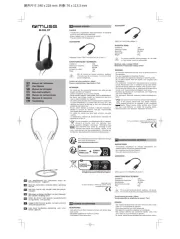
2 Augustus 2025
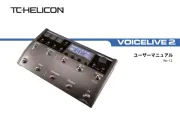
2 Augustus 2025
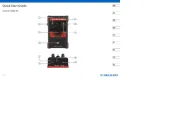
2 Augustus 2025
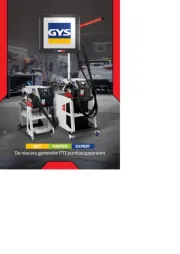
2 Augustus 2025
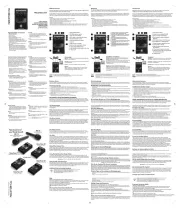
2 Augustus 2025
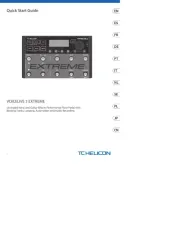
2 Augustus 2025
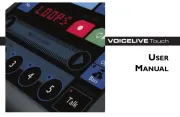
2 Augustus 2025
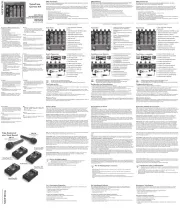
2 Augustus 2025
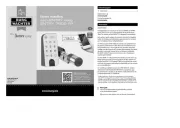
2 Augustus 2025
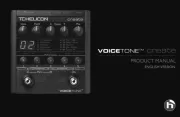
2 Augustus 2025